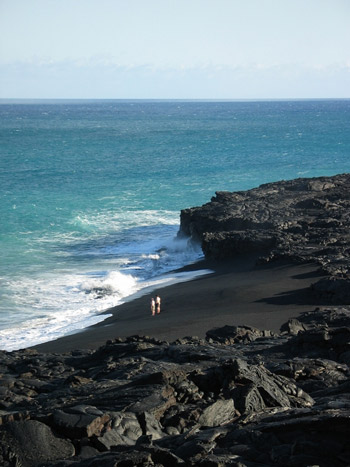This Wednesday, marks the 96th anniversary of two of Hawaii’s most prized national parks: Hawai’i Volcanoes National Park and Haleakalā National Park, both of which were established decades before Hawaii was even a state. Back in 1916, only one park was actually created to represent the combination of volcanic areas on the islands of Maui and Hawaii. It was not until 1960 that the two islands volcanic wonders were divided to create two separate national parks. Here are some of the each parks highlights.
Hawai’i Volcanoes National Park, named for what else but its famous volcanoes:
- The park is located on the southeastern edge of the Big Island of Hawaii.
- The active volcano Mauna Loa is the most massive mountain on Earth when measured from the seafloor at 33,000 feet.
- The park’s most recent volcanic activity occurred at the small volcano known as Kilauea, which means “spewing, much spreading.”
- With lava flowing at an average rate of 800-1,300 gallons per second from the currently erupting volcano Kalauea, more than 500 acres of new land have been added to the island of Hawaii since the eruption began in 1983.
Haleakalā National Park:
- This park stretches across Maui’s southern and eastern coastline and is home to Maui’s highest peak.
- Haleakalā is Hawaiian for “house of the sun.”
- The park is home to the rare Haleakalā silversword, a plant endemic to the islands that only grows in a 2,471-acre area at an elevation of 6,890 to 9,843 feet.
- The park surrounds and includes the Haleakalā crater, a massive shield volcano that forms more than 75 percent of Maui.
Both parks have been named by the United Nations as an International Biosphere Reserve — and Hawai’i Volcanoes National Park is a World Heritage Site — due in part to their diverse ecology and native species. But these species have been facing grave challenges from invasive species and animals. The parks have made strong efforts to prevent this destruction from invasive weeds and feral pigs by fencing off the native species in the parks to protect them.
Over the years American Forests has had a variety of planting projects in Hawaii. This year we will be teaming with the Hawaiian Silversword Foundation, an organization dedicated to restoring native plants and ecosystems, to plant 6,000 trees in the Waihou Spring Forest on Maui. Hopefully these plantings and efforts in the future will help to keep Hawaii and its famous national parks healthy and diverse for years to come.

